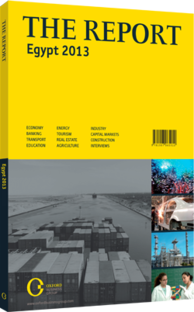OBG talks to Walid El Nohazy, Executive President, Arab Mediterranean Free Trade Agreement (Agadir Agreement)

Interview: Walid El Nohazy
What impact has the Arab Spring had on trade integration within the region?
WALID EL NOHAZY: Two events have negatively affected trade integration in the region as well as other parts of the world in recent years. First, there was the global financial crisis which led to substantial cost increases in 2008, affecting export values in particular. This was followed by diminishing global demand in 2009 and 2010 and a decline in exports. Then the Arab Spring started from 2011. These fundamental changes have confirmed the region’s vulnerability in a variety of areas, but equally its progress and potential.
These developments are clearly linked to economic weaknesses, notably limited job creation, insufficient social and economic reforms and a low level of regional integration. There is a strong need for the countries of the region to re-invigorate their economies. The progress of regional trade integration is critical to consolidate the investment attractiveness of Agadir countries. Market enlargement and stability prospects through South-South free trade agreement (FTA) implementation are very important to maintain foreign direct investment (FDI) inflows and to reduce capital outflows. Recent political changes have opened a window of opportunity to foster economic transition. Policies and institutions suddenly have become more flexible. The period offers an historic opportunity to promote and accelerate economic reforms. The regional dimension has taken on increased importance and cooperation will be critical in mitigating negative spillovers.
Which new areas or commodities are currently being discussed for liberalisation?
EL NOHAZY: It should be first noted that trade exchange levels should not alone define the Agadir Agreement. The agreement has a deeper and broader scope and objectives rather than trade exchange. The Agadir Technical Unit (ATU) has taken the initiative to liberalise trade in services between the four member states in 2010 that was widely accepted by the member states. In addition, the contribution of the services sector in the economies of the four member states is strong and they have a competitive advantage in some segments. After many discussions, negotiations were launched to identify the priority sectors to be liberalised in the first stage. The negotiations are still ongoing.
How can increased participation from small and medium-sized enterprises (SMEs) in regional trading be encouraged and promoted?
EL NOHAZY: SME exports constitute the majority of world exports. ATU and the member states of the Agadir Agreement are fully aware of this reality, and accordingly a comprehensive study was conducted in 2012 to help bolster the volume of SME exports within the Agadir Agreement. The study focuses on how to encourage SMEs in member countries to implement the rule of accumulation of origin provided for under the Agadir Agreement to increase exports to EU markets. An action plan was developed to target SMEs in certain sectors that have potential to export to the EU market. The plan is currently being discussed more in-depth and the implementation is expected to start by 2013.
To what extent can the Agadir Agreement involve the broader Mediterranean basin?
EL NOHAZY: It already is. The Agadir Agreement is currently the only South-South FTA linked to the Barcelona process, which was launched in 1995 as a step towards establishing the Euro-Med free trade area.
The agreement aims to contribute to the realisation of the economic objective of the Barcelona declaration, which calls for the “creation of an area of shared prosperity through the progressive establishment of free trade between the EU and its Mediterranean partners and amongst the partners themselves”. In order to fulfil the requirements of Mediterranean integration, the network of FTAs between all the Mediterranean countries needs to be completed so that the diagonal accumulation between them can become a possibility.
You have reached the limit of premium articles you can view for free.
Choose from the options below to purchase print or digital editions of our Reports. You can also purchase a website subscription giving you unlimited access to all of our Reports online for 12 months.
If you have already purchased this Report or have a website subscription, please login to continue.

